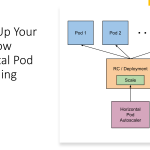Continuing from my previous blog, let’s explore some more advanced topics related to DevSecOps implementation.
Automated Vulnerability Management
Automated vulnerability management is a key practice in DevSecOps. It involves using automated tools to identify, prioritize, and remediate vulnerabilities in an organization’s systems and applications. Automated vulnerability management includes the following activities:
- Vulnerability Scanning: Use automated vulnerability scanning tools to scan systems and applications for known vulnerabilities.
- Vulnerability Prioritization: Prioritize vulnerabilities based on their severity and potential impact on the organization.
- Patch Management: Automate the patching process to ensure that vulnerabilities are remediated quickly and efficiently.
- Reporting: Generate reports to track the status of vulnerabilities and the progress of remediation efforts.
Shift-Left Testing
Shift-left testing is a practice that involves moving testing activities earlier in the software development lifecycle. By identifying and fixing defects earlier in the development process, shift-left testing helps organizations reduce the overall cost and time required to develop and deploy software. Shift-left testing includes the following activities:
- Unit Testing: Automate unit testing to ensure that individual code components are working correctly.
- Integration Testing: Automate integration testing to ensure that multiple code components are working correctly when integrated.
- Security Testing: Automate security testing to ensure that the software is secure and compliant with security policies and regulatory requirements.
- Performance Testing: Automate performance testing to ensure that the software is performing correctly under different load conditions.
Infrastructure Security
Infrastructure security is a critical aspect of DevSecOps. It involves securing the underlying infrastructure, such as servers, databases, and networks, on which the software is deployed. Infrastructure security includes the following activities:
- Secure Configuration: Ensure that the infrastructure is configured securely, following best practices and security policies.
- Access Control: Control access to infrastructure resources to ensure that only authorized users and processes can access them.
- Monitoring and Logging: Monitor infrastructure activity and log data to detect potential security issues and enable forensic analysis.
- Disaster Recovery: Develop and implement disaster recovery plans to ensure that critical infrastructure can be restored in case of a security incident or outage.
Conclusion
DevSecOps is a critical practice that requires continuous improvement and refinement. By implementing automated vulnerability management, shift-left testing, and infrastructure security, organizations can improve their security posture significantly. These practices help identify and remediate vulnerabilities early in the development process, secure the underlying infrastructure, and ensure compliance with security policies and regulatory requirements. By following these best practices, organizations can build and deploy software that is secure, compliant, and efficient in a DevSecOps environment.

